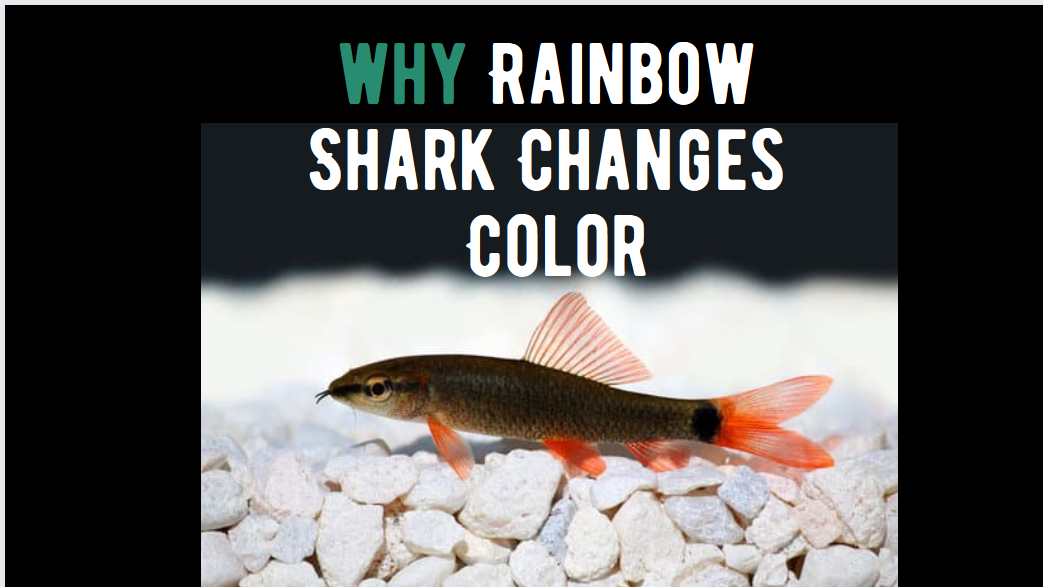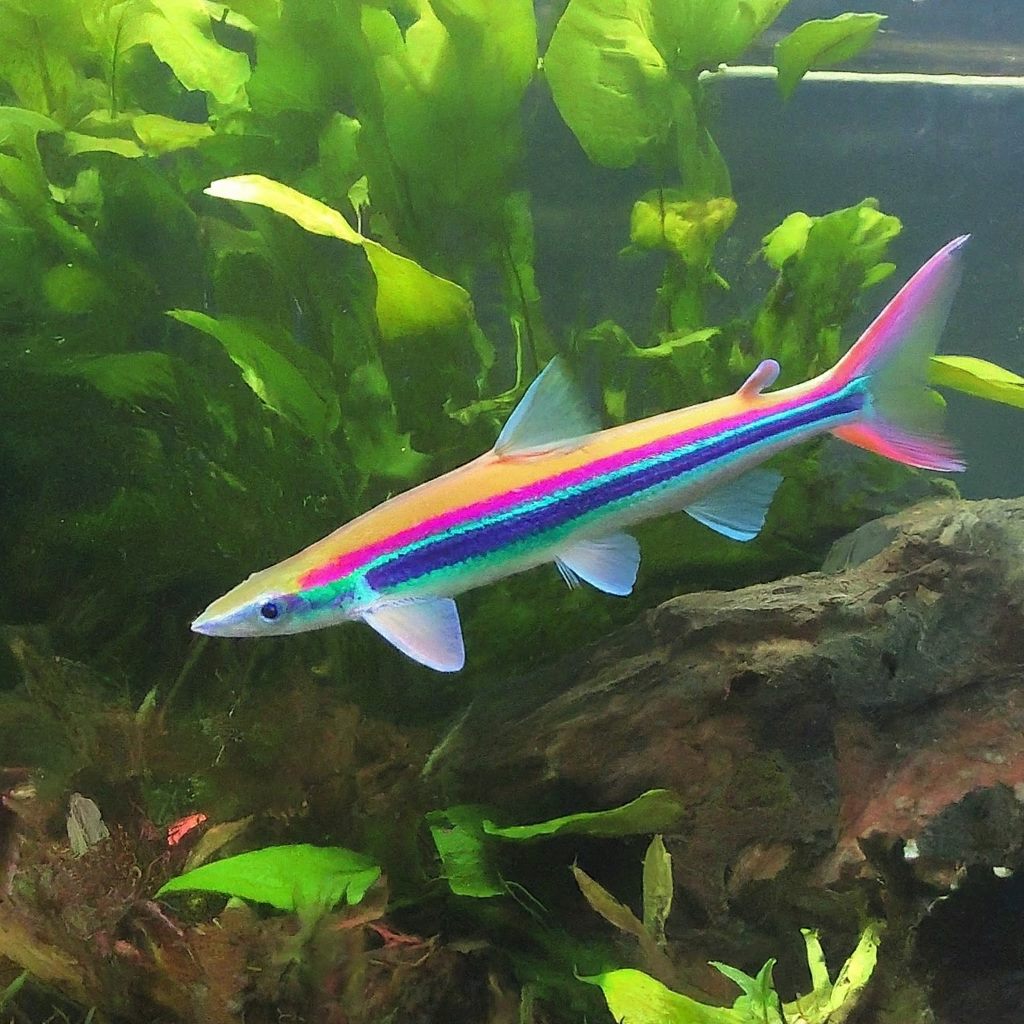
Rainbow Sharks: Do They Change or Lose Color? Rainbow Sharks, scientifically known as Epalzeorhynchos frenatum, are popular aquarium fish renowned for their striking appearance and vibrant hues. Aquarists often marvel at their beautiful red and black coloration, but a common question arises: do Rainbow Sharks change or lose color over time? This comprehensive article delves into the fascinating world of Rainbow Sharks, exploring their coloration, the factors influencing it, and common queries associated with their captivating presence in aquariums.
Rainbow Sharks are known for their dynamic coloration, characterized by a predominantly red body with contrasting black fins and a distinctive dorsal fin. This coloration serves aesthetic and functional purposes, contributing to their overall appeal and potentially playing a role in communication and territorial displays.
These fish are native to Southeast Asia and can grow up to 6 inches long. They have an elongated body with a pointed snout and a flattened abdominal area. Their fins are typically red or orange-red, while their body can range from black, dark blue, or bright blue.
Rainbow Sharks are generally considered semi-aggressive fish, but they can be peaceful when kept in a properly sized tank with compatible tank mates. They are omnivores and will eat various foods, including flakes, pellets, algae, and brine shrimp.
Here are some additional facts about Rainbow Sharks:
- They are relatively easy to care for, making them a good choice for beginner aquarists.
- They are social fish and do best when kept in groups of 5-6 individuals.
- They are active swimmers and need a tank with plenty of space to explore.
- They can live for up to 10 years with proper care.

6 Factors Influencing Rainbow Shark Color:
Natural Developmental Changes:
A. Juvenile to Adult Transition:
- Color Evolution: One of the most significant reasons for color changes in Rainbow Sharks is the natural evolution from juvenile to adult stages. Juvenile Rainbow Sharks often showcase a paler color palette, gradually intensifying into the vibrant red and black hues characteristic of adults.
Environmental Influences:
A. Water Quality and Conditions:
- Impact on Health: The overall well-being of Rainbow Sharks is closely tied to the quality of the water they inhabit. Changes in water parameters, such as pH, temperature, and hardness, can influence their stress levels and, consequently, their coloration.
- Filtered Environments: Maintaining a well-filtered aquarium with appropriate water conditions promotes the health and vibrancy of Rainbow Sharks’ colors.
B. Lighting:
- Light Spectrum: Adequate and suitable lighting is crucial in enhancing the visibility of Rainbow Sharks’ colors. The spectrum, intensity, and duration of light exposure can impact how their colors appear.
- Natural vs. Artificial Lighting: Differences between natural sunlight and artificial aquarium lighting may affect the perception of Rainbow Sharks’ colors.
Dietary Considerations:
A. Nutrition:
- Balanced Diet: The diet of Rainbow Sharks significantly influences their coloration. High-quality fish foods with color-enhancing ingredients contribute to the vibrancy of their red and black hues.
- Nutrient Deficiencies: Inadequate nutrition or imbalances in their diet may lead to subdued colors and impact overall health.
IV. Behavioral Responses:
A. Stress:
- Temporary Changes: Rainbow Sharks can exhibit temporary color changes in response to stress. Factors such as environmental changes, tank mates, or sudden disturbances can lead to pallor or darkening.
- Territorial Behavior: Aggressive or territorial behavior, common in Rainbow Sharks, may result in temporary alterations in color.
B. Mood and Well-being:
- Mood-Induced Changes: like many fish, Rainbow Sharks may display mood-induced color variations. Observing their behavior and addressing potential stressors can help maintain their vibrant colors.
Species-Specific Traits:
A. Individual Variability:
- Genetic Factors: Rainbow Sharks, like any species, may exhibit individual color variations due to genetic factors. Variations in genes can contribute to unique patterns and shades.
Environmental Adaptations:
A. Camouflage:
- Natural Camouflage: In the wild, Rainbow Sharks may adapt their colors to their surroundings for camouflage, especially when feeling threatened or vulnerable.
b. Temporary Color Changes:
- Stress Response: Rainbow Sharks may experience temporary color changes, such as paling or darkening, in response to stressors like changes in the environment, tank mates, or water conditions.
- Behavioral Influences: Aggressive behavior or territorial disputes can also trigger color changes temporarily.
c. Permanent Color Changes:
- Maturity: The most significant permanent color change occurs from juvenile to adult stages. The subdued colors of juveniles transform into the iconic red and black hues.
Common FAQs About Rainbow Sharks:
Q1: Can Rainbow Sharks lose their color entirely?
A1: While temporary color changes can occur due to stress, Rainbow Sharks generally maintain their vibrant coloration throughout their lives, with the most significant changes happening during maturation.
Q2: How can I enhance the color of my Rainbow Shark?
A2: Providing a clean and well-maintained environment, offering a balanced and nutritious diet, and ensuring suitable lighting can enhance the coloration of Rainbow Sharks.
Q3: Do Rainbow Sharks tolerate tank mates with similar colors?
A3: Rainbow Sharks can be territorial, especially toward similar-looking species. Monitoring their behavior and providing adequate hiding spots is essential to reduce potential conflicts.
Q4: Can Rainbow Sharks change color based on their mood?
A4: Rainbow Sharks may exhibit temporary color changes in response to mood or stress. Monitoring their behavior and addressing potential stressors can help maintain their vibrant colors.
Q5: What should I do if my Rainbow Shark’s color fades?
A5: If you notice a significant and prolonged color fade, assess and address potential stressors, check water parameters, and ensure a well-balanced diet. Consulting with an aquarium professional may be beneficial.
Conclusion:
With their captivating coloration, Rainbow Sharks add a vibrant touch to aquariums. Understanding the factors influencing their colors and the natural changes they undergo and addressing potential stressors ensures a thriving and visually stunning aquatic environment. As guardians of these mesmerizing creatures, aquarists play a pivotal role in preserving the radiant beauty of Rainbow Sharks in captivity.






